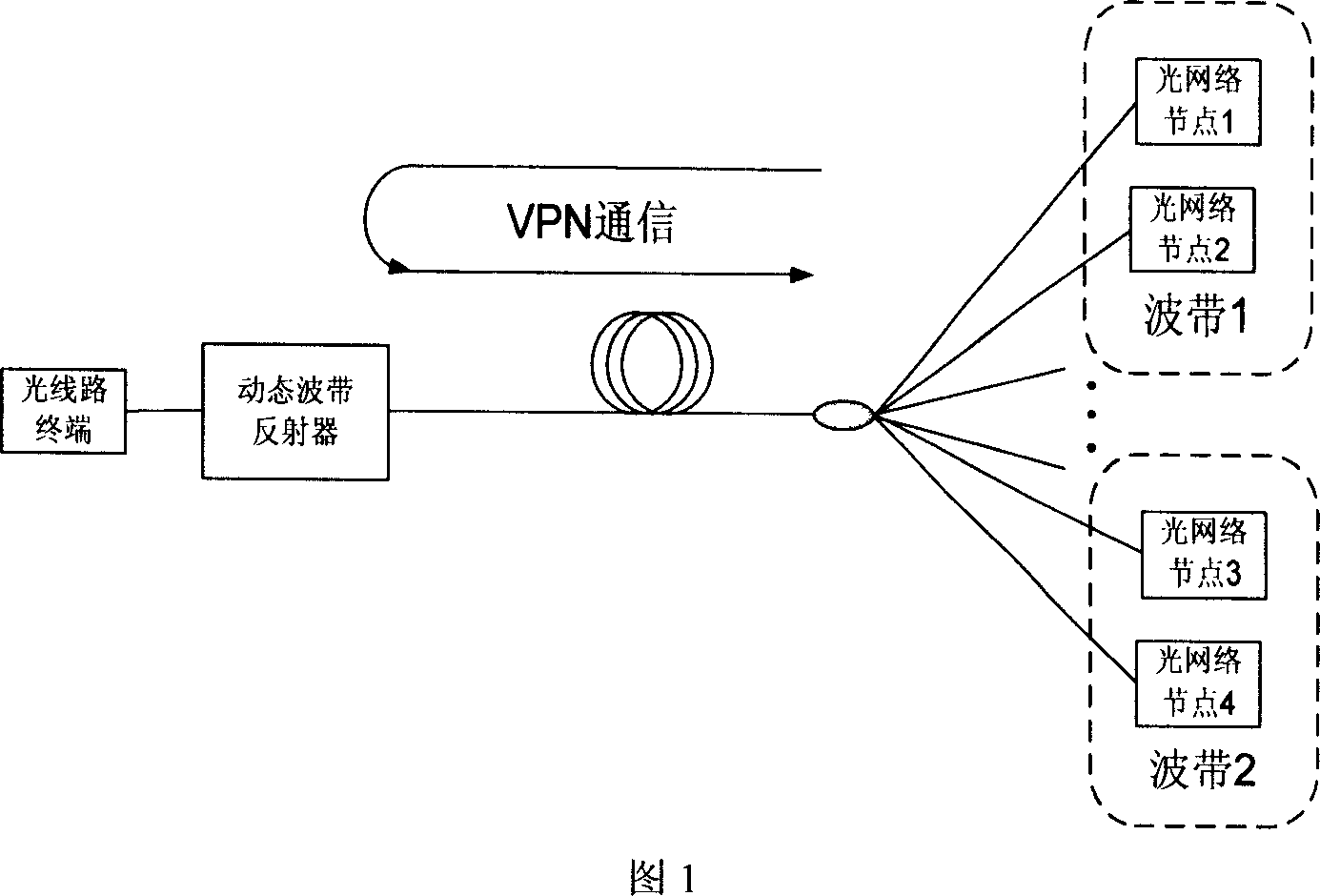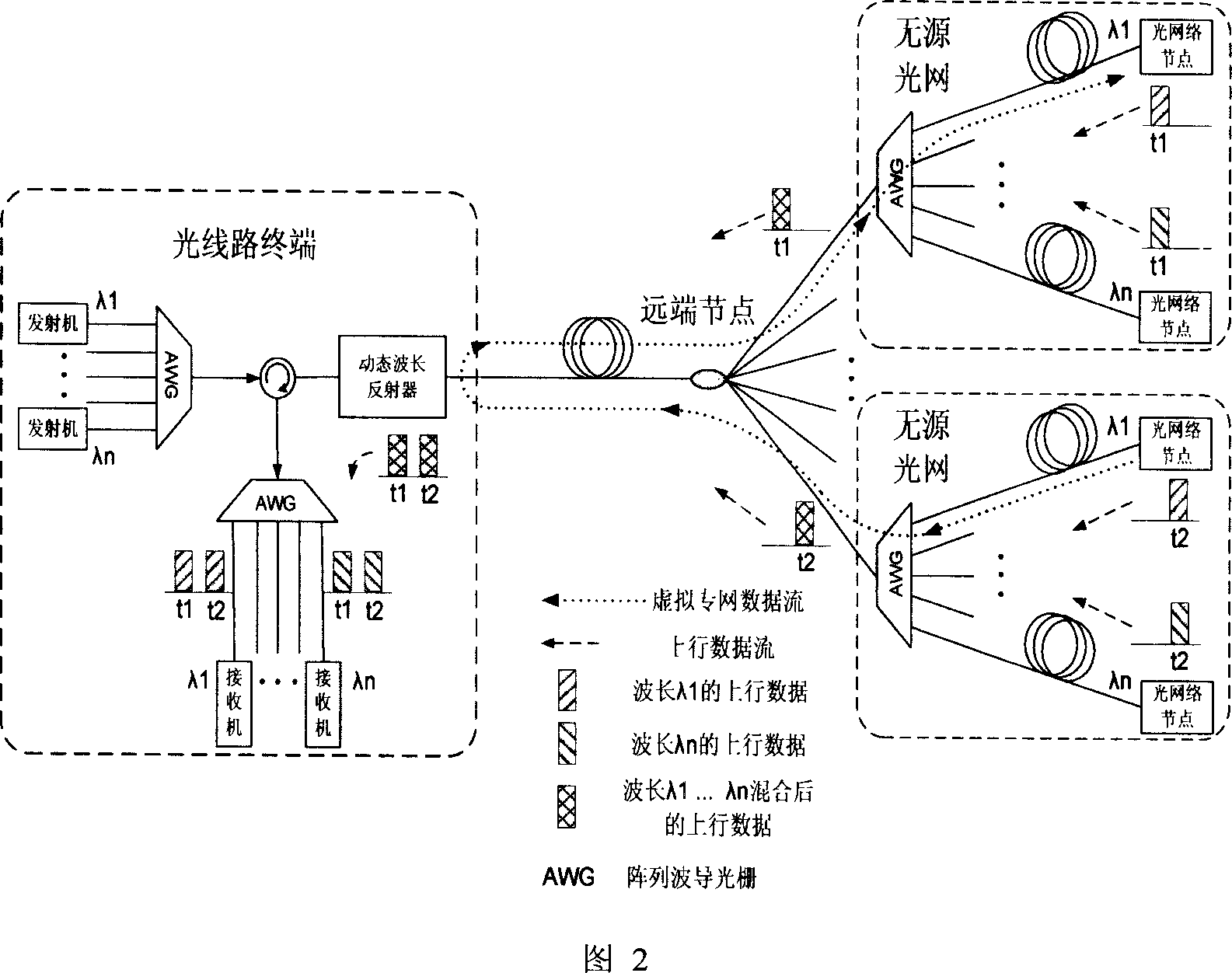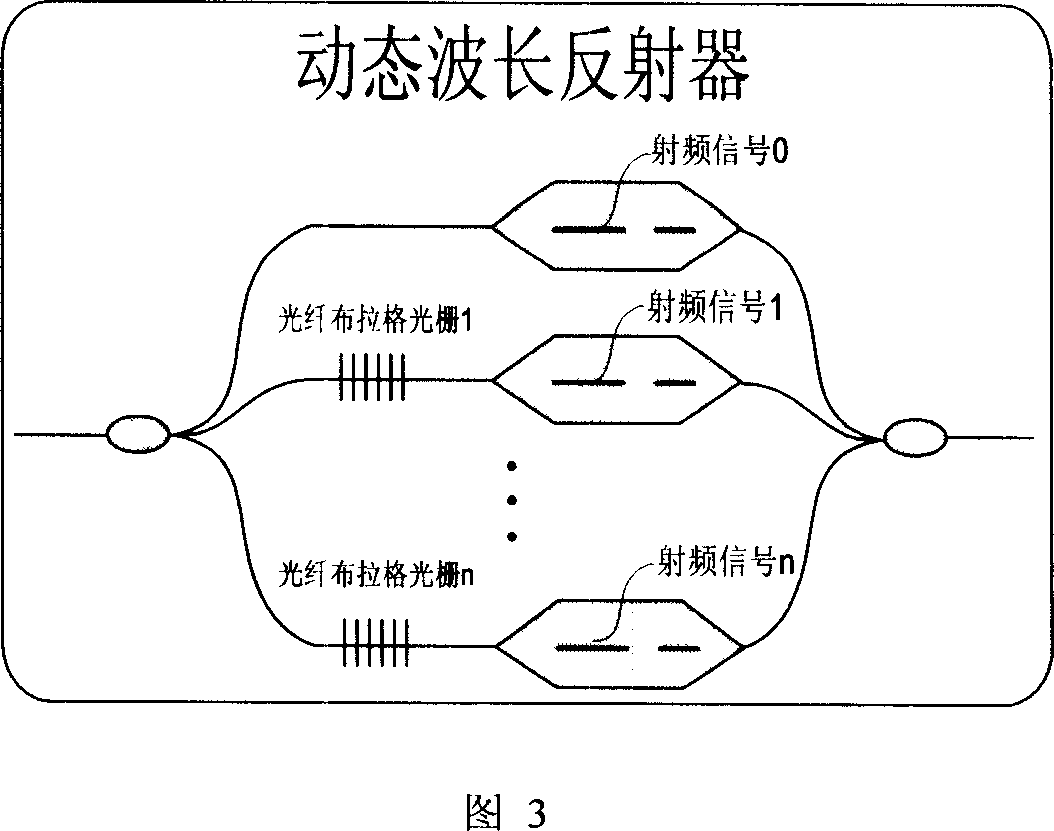Network structure for realizing the full-optical virtual private network between more than two passive optical networks
A passive optical network and virtual private network technology, applied in the field of optical fiber communication, can solve problems such as flexibility limitations and achieve the effect of large access range
- Summary
- Abstract
- Description
- Claims
- Application Information
AI Technical Summary
Problems solved by technology
Method used
Image
Examples
Embodiment Construction
[0025] As shown in Figure 1, the optical network nodes in the same passive optical network use different wavelengths (λ1, λn) (n is the number of wavelengths used in the network) to transmit uplink data, which is coupled into a optical fiber. Different passive optical networks use different time slots for communication (t1, t2), are coupled together through a 1:N coupler at a remote node, and are transmitted to an optical line terminal. If the dynamic reflector pairs λ1 and λn (n is the number of wavelengths used in the network) are in the passing state, the optical signal passes through the reflector, passes through the circulator and the arrayed waveguide grating, and is received by the corresponding receiver. If the dynamic reflector is in the reflective state for a certain wavelength (λ1), its uplink signal will be reflected back to the remote node, and then broadcast to all passive optical networks, and received by the optical network node of the corresponding wavelength ...
PUM
 Login to View More
Login to View More Abstract
Description
Claims
Application Information
 Login to View More
Login to View More - R&D
- Intellectual Property
- Life Sciences
- Materials
- Tech Scout
- Unparalleled Data Quality
- Higher Quality Content
- 60% Fewer Hallucinations
Browse by: Latest US Patents, China's latest patents, Technical Efficacy Thesaurus, Application Domain, Technology Topic, Popular Technical Reports.
© 2025 PatSnap. All rights reserved.Legal|Privacy policy|Modern Slavery Act Transparency Statement|Sitemap|About US| Contact US: help@patsnap.com



